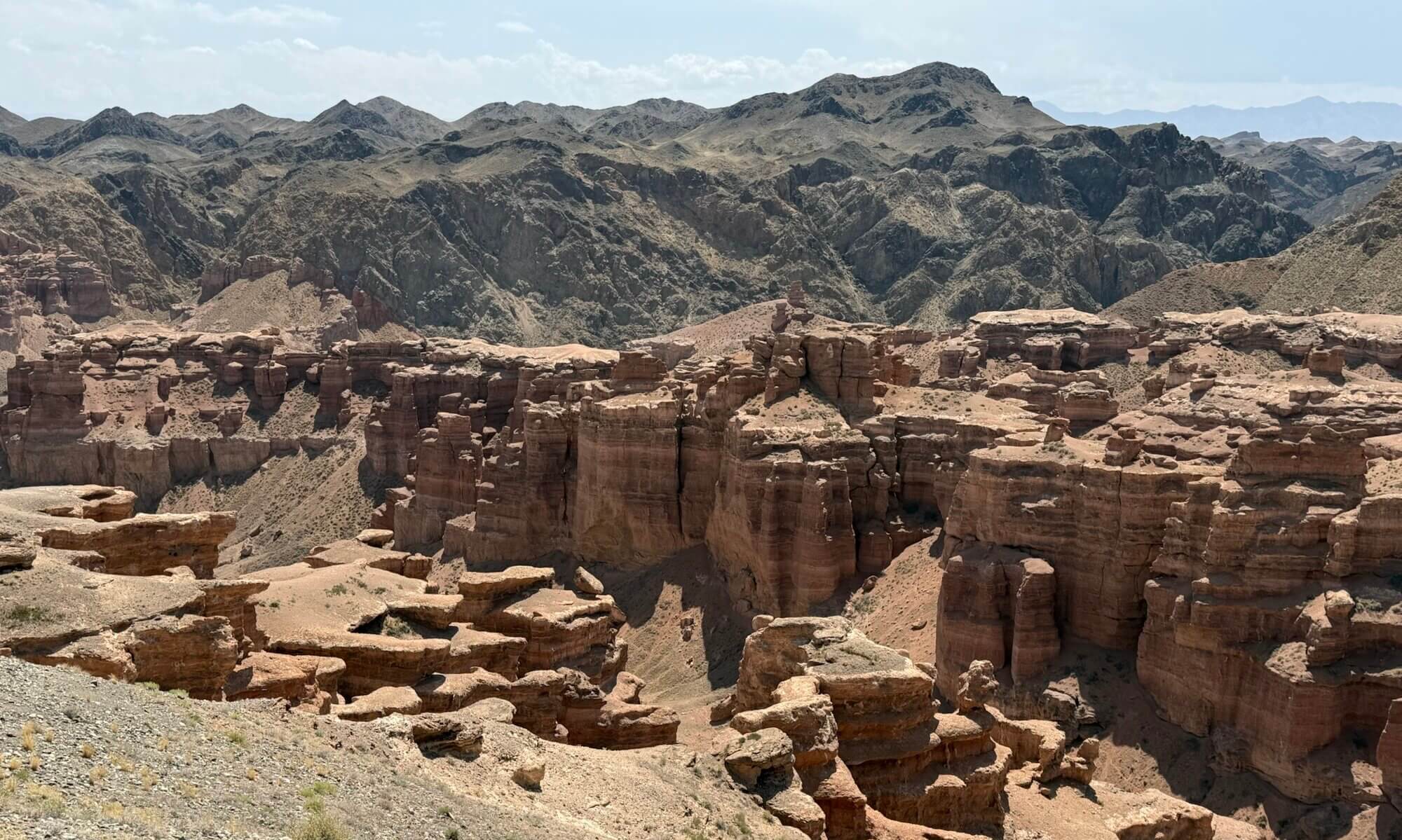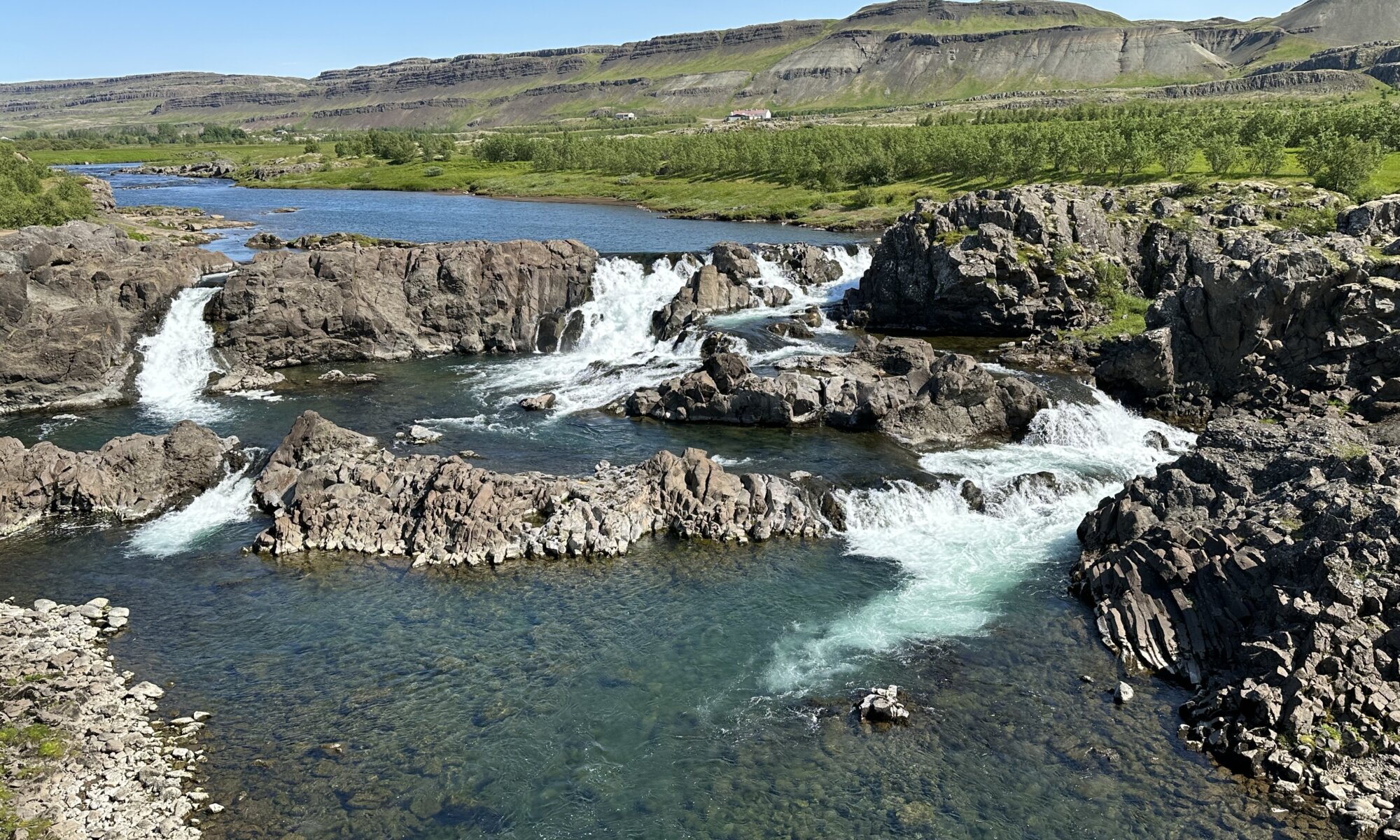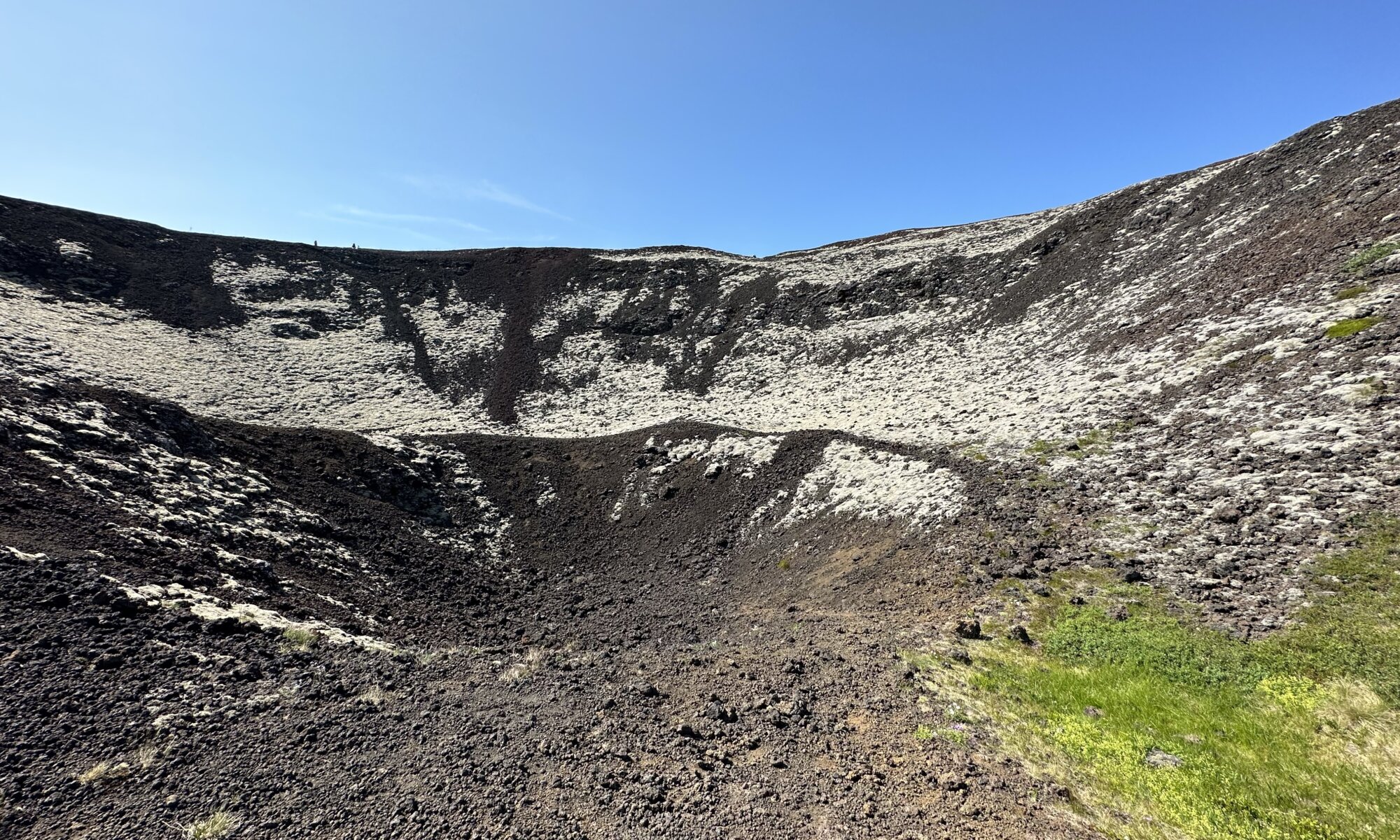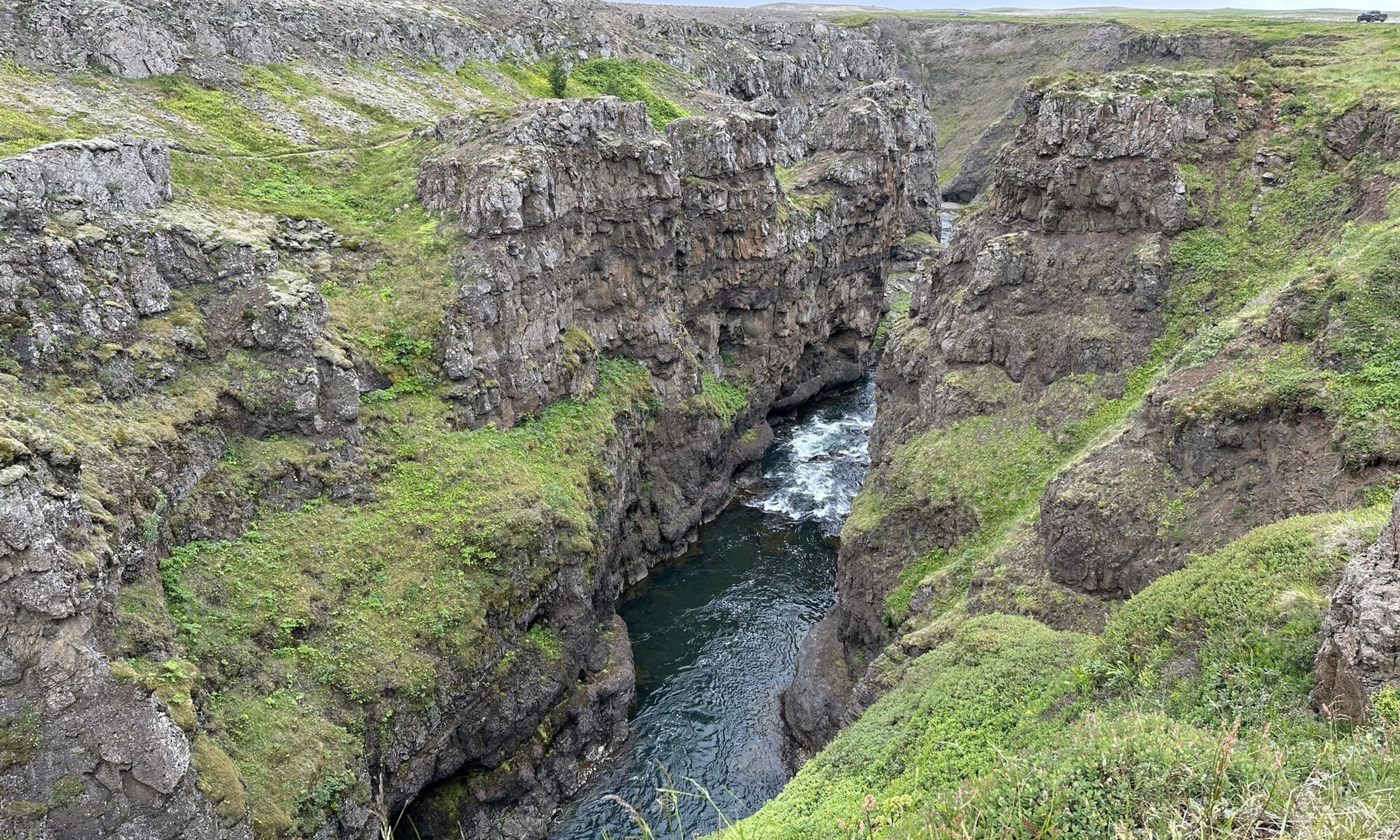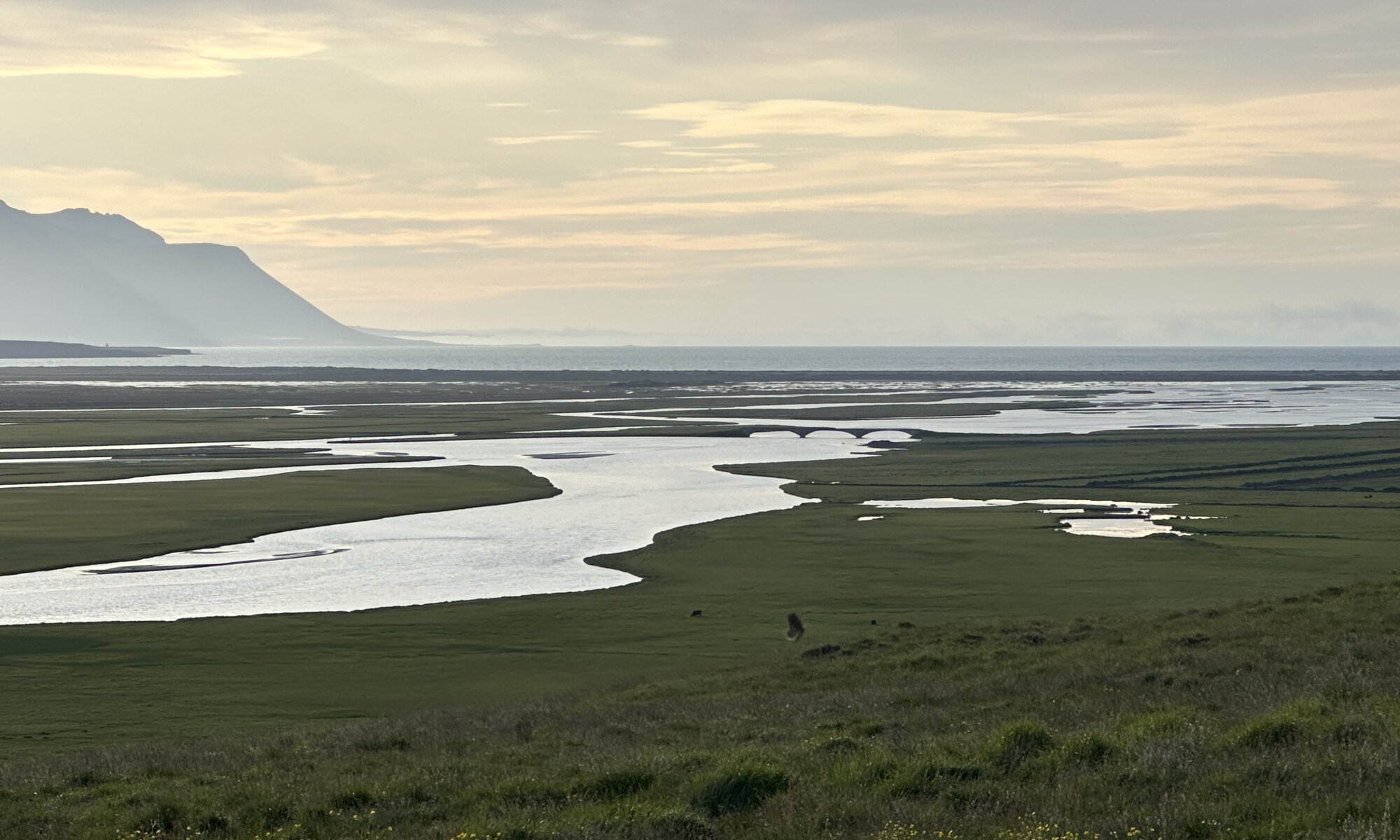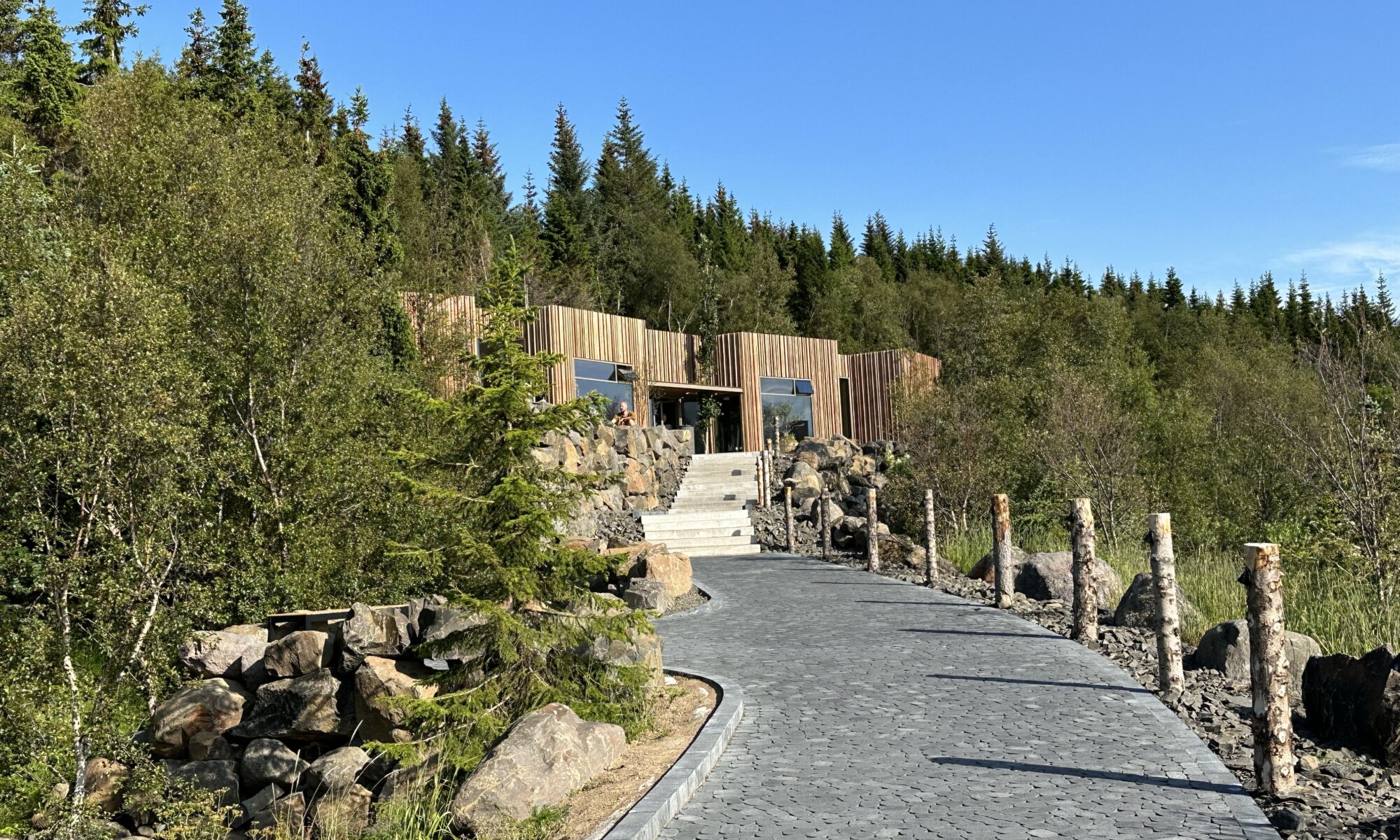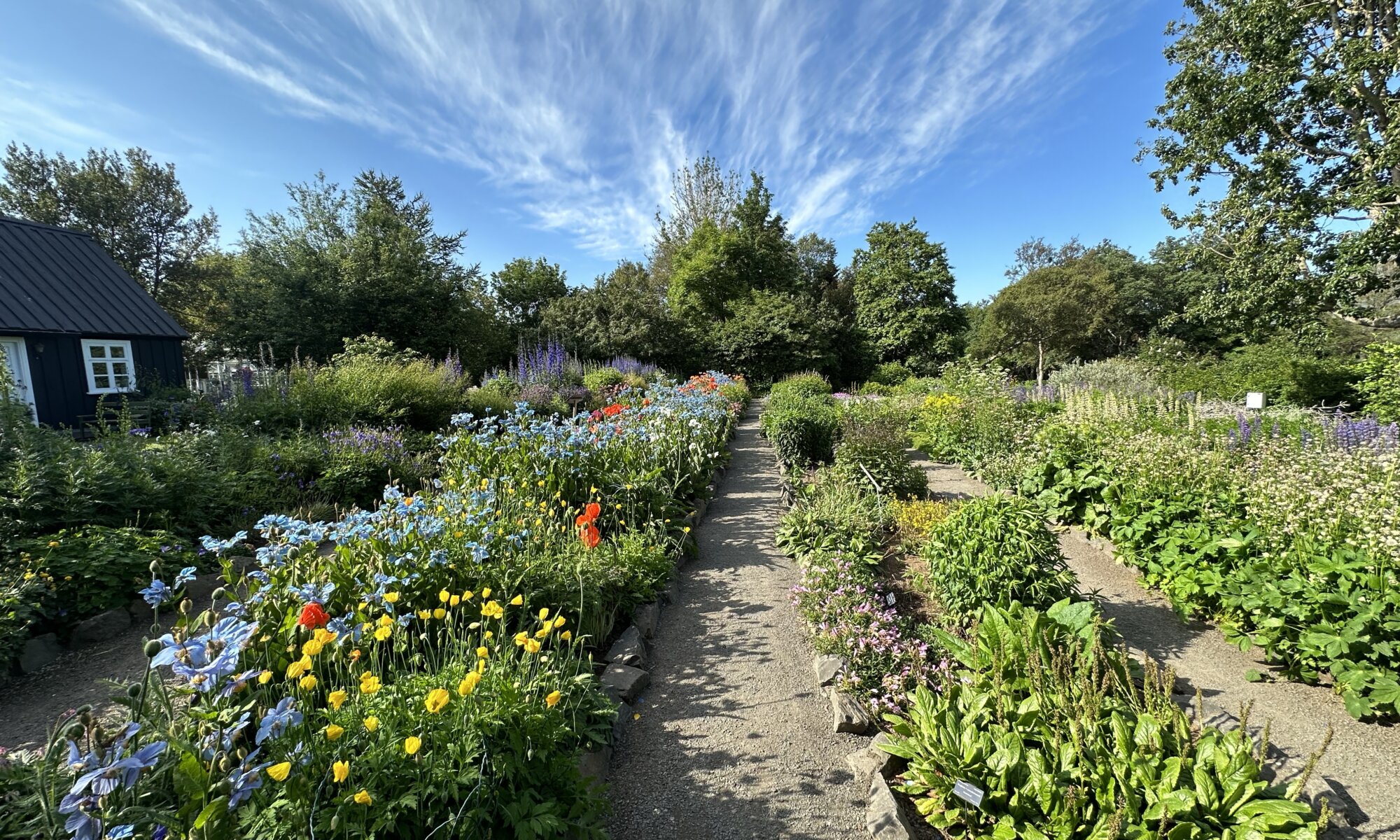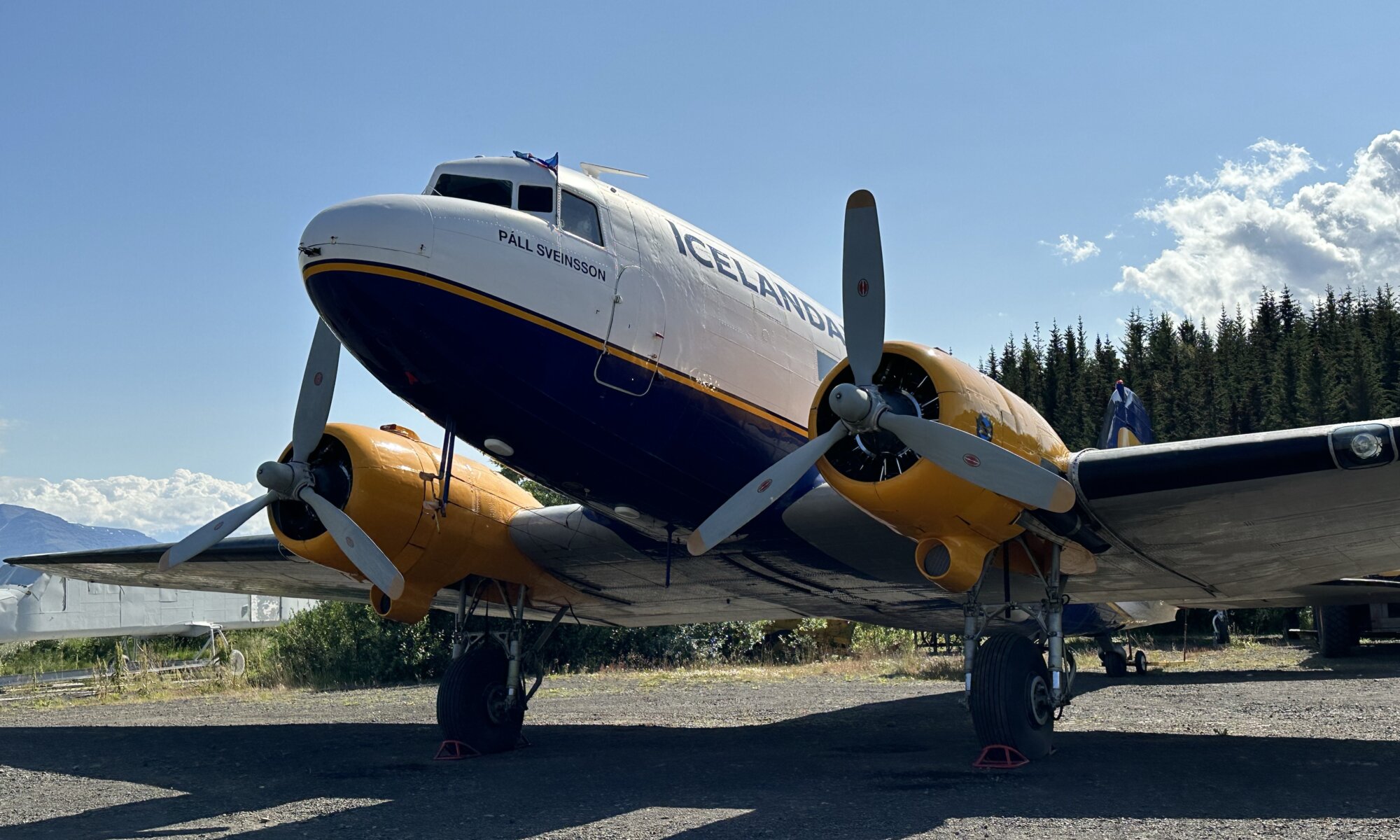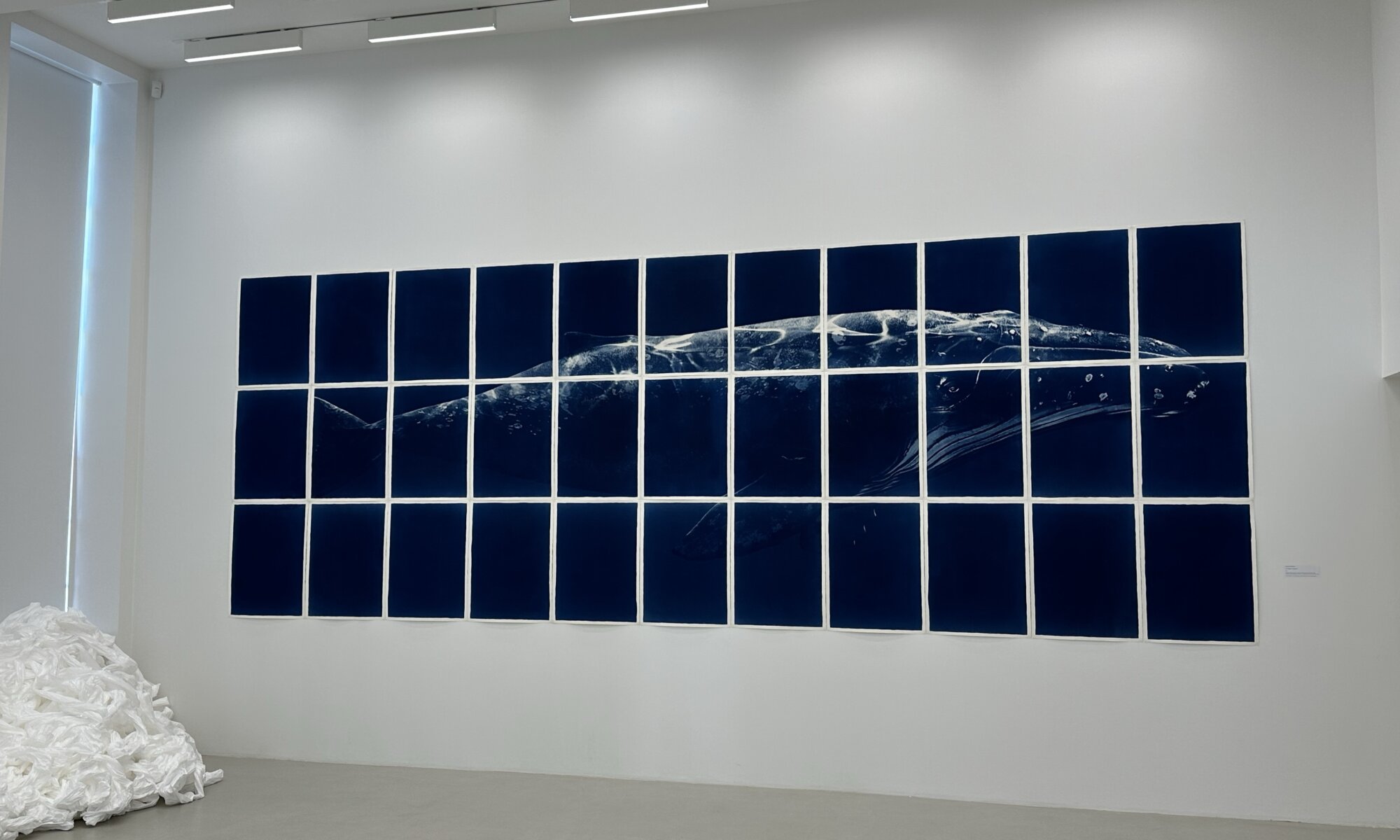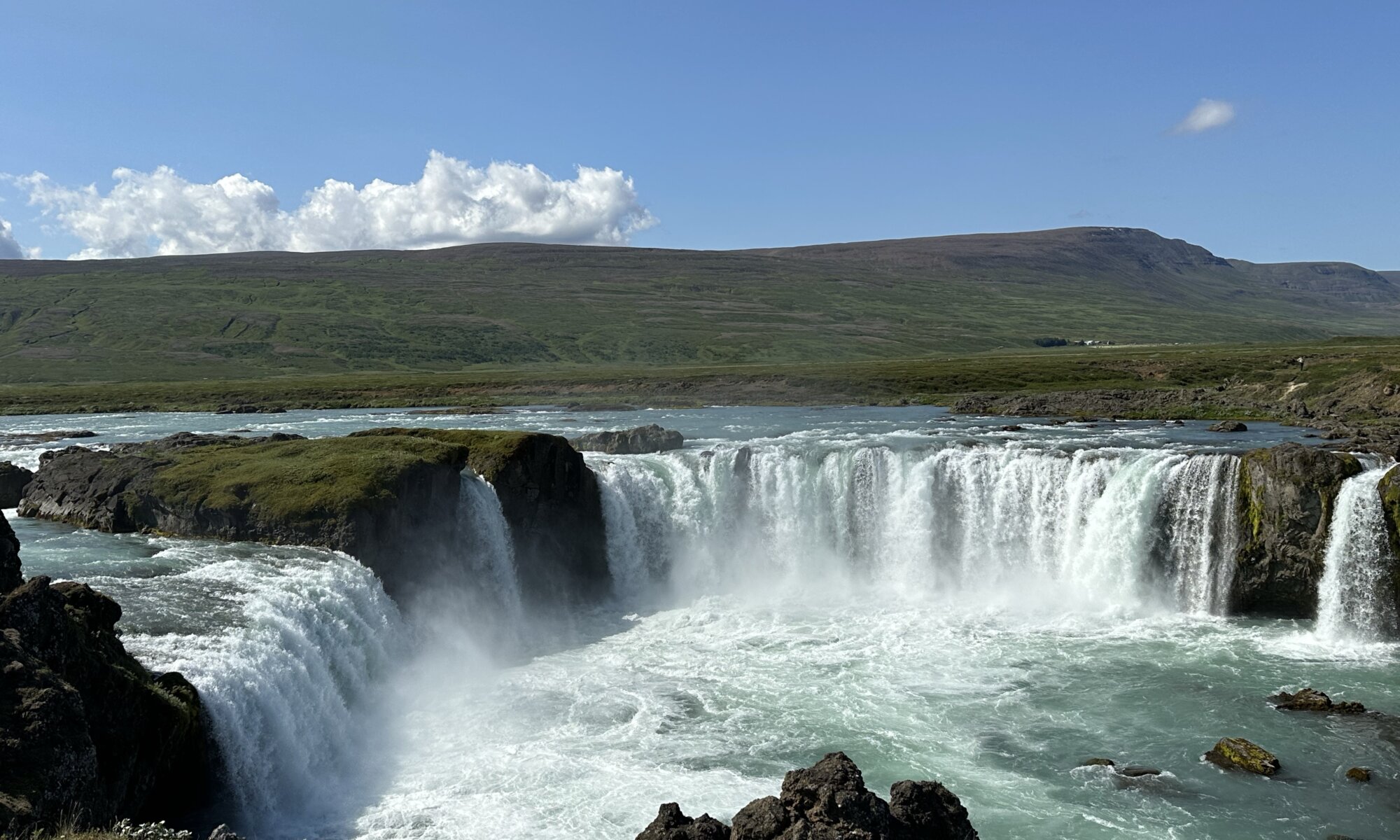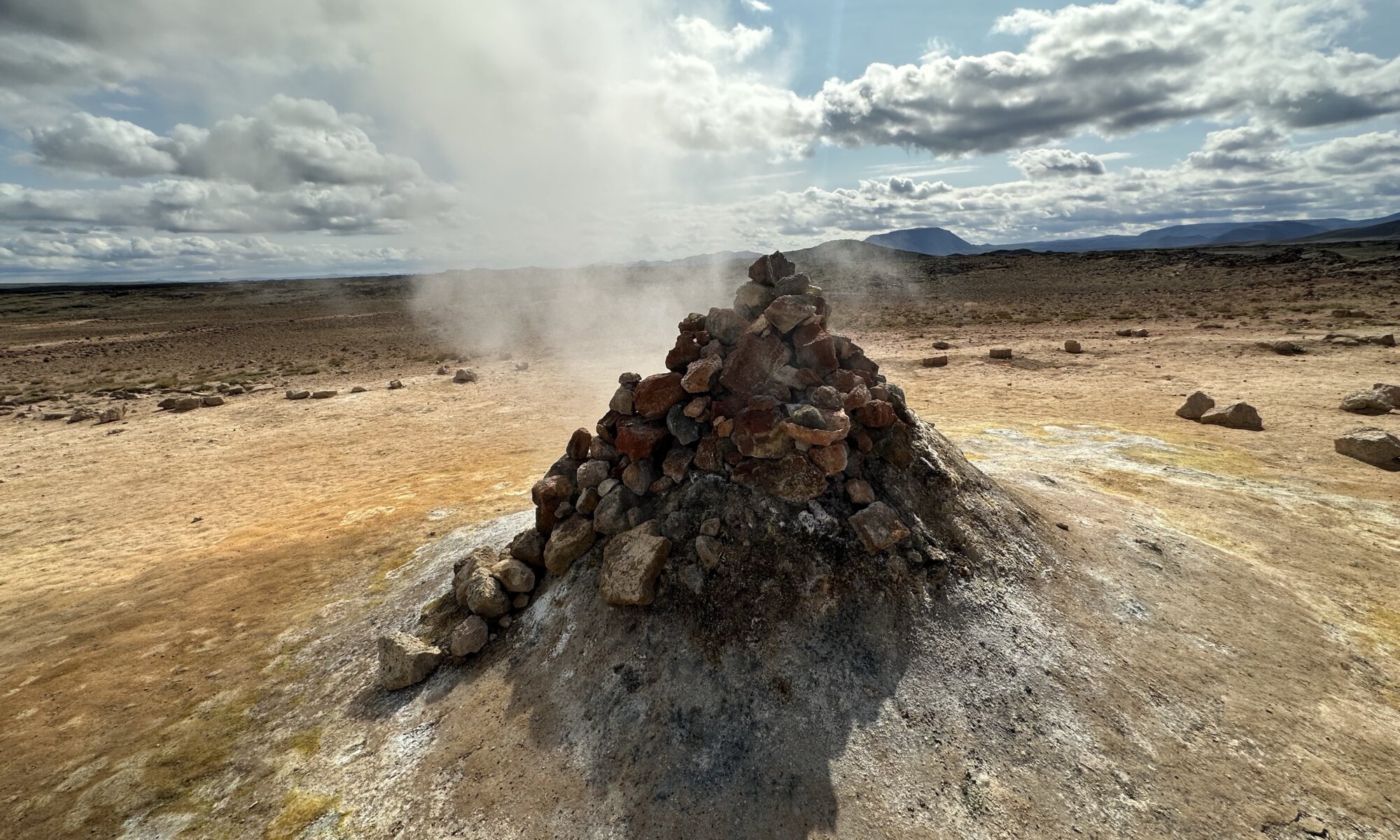Ready for a last waterfall before returning to the capital city of Iceland? The Glanni is a smaller waterfall close to Bifröst. After leaving the ring road you’ll discover a parking area and a short walk will bring you to a viewing platform close to the waters. If you don’t only want to look from up above a tiny path leads you through the forest down to the water.
Continue reading “Glanni”Volcano climbing
Shortly before reaching the village Bifröst on the ring road of Iceland you’ll see the high Grábrók crater next to the road. It is an excellent opportunity for a rest as the former volcano is part of a nature protection zone and nice wooden steps lead you up into the crater. Well, it is a bit painful but it looks more horrible than it really is – and the views on the area are beautiful from up there.
Continue reading “Volcano climbing”Kolugljúfur
The northwest of Iceland is a region with only a few touristic sights. Between Akureyri and Reykjavík you normally drive long passages without many stops. A good opportunity for a rest and maybe a picnic is the Kolugljúfur canyon. It only needs a short detour from the ring road on road 715. There the Víðidalsá river is running through a deep canyon and the Efrifoss waterfall (which is part of the Kolufossar) sends its waters into the deep.
Continue reading “Kolugljúfur”Hofsstaðir
The Hofsstaðir gistiheimili is a guesthouse in a remote location close to Sauðárkrókur. From the rooms you’ve got nice views on the valley and the river which spreads with different river arms pretty wide. On arrival you’ll bet at a round place with a restaurant and the reception as well as different small houses surrounding it. Hofsstaðir was one of the hotels I enjoyed most: every room has two terraces with chairs to sit outside and the armchairs inside were really cozy.
Continue reading “Hofsstaðir”Skógarböð
One of the traditions I created while travelling on Iceland was to spend the evening hours in geothermic spas. And fortunately Akureyri has a good option for that: the Skógarböð or forest lagoon. It is located on the other side of the fiord and you need to cross it on the dam. Directly when this connection reaches the other side there is the entrance to the spa. Its unique feature is that it is within a forest, letting you relax in hot water between the trees.
Continue reading “Skógarböð”Flower power
There is nothing better than a botanical garden if you want to rest a little bit. And the botanical garden of Akureyri is a very good example for that: it has wonderful flowers, can be entered free of charge and there is even a coffee bar (the Laut) in the center of the garden. You can discover 400 local plants and 6,000 plants from all over the world (from polar regions and high mountains) in the garden.
Continue reading “Flower power”Icelandic Aviation Museum
Aviation is a necessity on Iceland, not only to reach the island itself but also for being able to reach all the different regions. You’ll be surprised how many small regional airports you can discover there. Therefore it is no surprise that there is a nice aviation museum and it is directly located next to the airport of Akureyri. That also gives you the nice opportunity to have a look on the airfield and to observe the most often tiny planes starting and landing.
Continue reading “Icelandic Aviation Museum”Akureyri Art Museum
It will probably forever be the most northern art museum I’ll ever visit, the Akureyri Art Museum (Listafnið á Akureyri). It is located in the city center of Akureyri within a former dairy close to the church Akureyrarkirkja. It was opened in 1993 and is exhibiting artworks of Icelandic as well as international artists. The museum was extended over time and since 2018 it also uses the neighboring Ketilhús.
Continue reading “Akureyri Art Museum”Goðafoss
The waterfall of the gods can be found half way between Laugar and Akureyri, the capital of the north. Goðafoss carries this name because after Iceland adopted Christianity in 1,000 CE images of the old gods were dropped here. Today it is mostly a beautiful and wide waterfall (12 meters high) which you can view from both sides. There are steps leading you down to the water as well as a viewing platform on top.
Continue reading “Goðafoss”Gates of Hell
In close vicinity to the Mývatn lake you can easily spot the geothermal area. If you hope that the steam coming out of the earth is a geyser you will be disappointed: it is an electric power point creating electricity from geothermic energy. There is also a natural spa making use of the power of the earth, but the real star is behind the mountain: an area full of bubbling mud and sulfur smokers in a moon-like environment.
Continue reading “Gates of Hell”